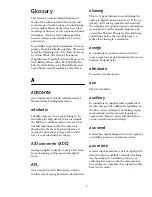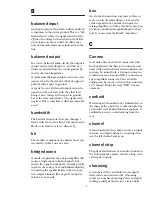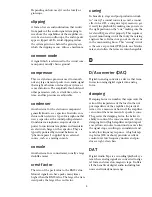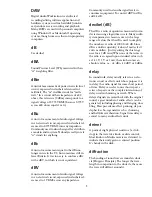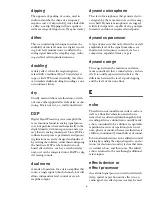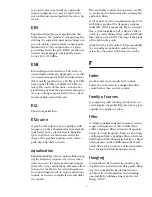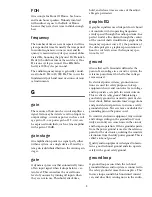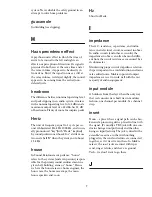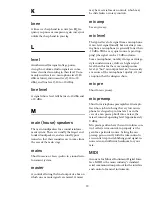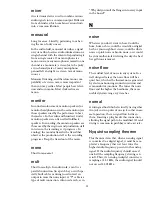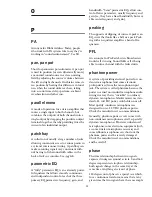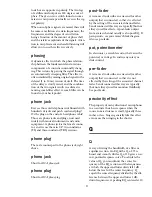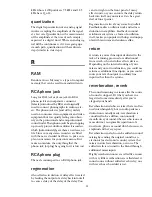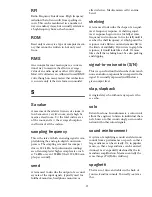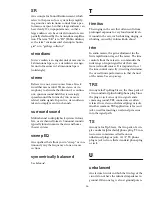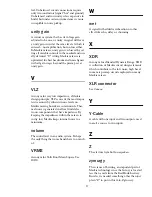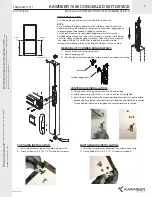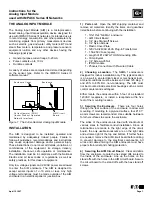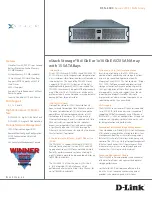
9
system. Never disable the safety ground in an
attempt to solve hum problems.
guacamole
Just kidding (see dipping).
H
Haas precedence effect
A psychoacoustic effect in which the time of
arrival of a sound to the left and right ears
affects our perception of direction. If a signal is
presented to both ears at the same time and at
the same volume, it appears to be directly in
front of us. But if the signal to one ear, still at
the same volume, is delayed slightly, the sound
appears to be coming from the earlier (non-
delayed) side.
headroom
The difference between nominal operating level
and peak clipping in an audio system. A mixer
with a nominal operating level of +4 dBu and a
maximum output level of +22 dBu has 18 dB
of headroom. Plenty of room for surprise peaks.
Hertz
The unit of frequency, equal to 1 cycle per sec-
ond. Abbreviated Hz. kHz 1000 Hz, and is usu-
ally pronounced “kay”(with “Hertz” implied)
by sound professions who ask for “a little more
two and a half K” when they want you to boost
2.5 kHz.
house
In Sound Reinforcement parlance, “house”
refers to the systems (and even persons) respon-
sible for the primary sound reinforcement in a
given hall, building, arena or “house.” Hence
we have the house mixer or house engineer, the
house mix, the house mix amps, the main
house speakers and so on.
Hz
Short for Hertz.
I
impedance
The A.C. resistance, capacitance, and induc-
tance in an electrical circuit, measured in ohms.
In audio circuits (and other ac circuits) the
impedance in ohms can often be much differ-
ent from the circuit resistance as measured by a
dc ohmmeter.
Maintaining proper circuit impedance relation-
ships is important to avoid distortion and mini-
mize added noise. Mackie input and output
impedances are set to work well with the vast
majority of audio equipment.
input module
A holdover from the days when the only way
that real consoles were built was in modular
fashion, one channel per module. See channel
strip.
insert
Noun – a place where a signal path can be bro-
ken and a processing device placed in line with
the signal. It’s usually a TRS jack with one con-
ductor being an output (send) and the other
being an input (return). The jack is wired with a
normalled connection
so that with nothing
plugged in, the send and return are connected
together, as if it wasn’t even there. In Mackie
mixers, the
insert
jacks are wired with tip as
send, ring as return, and sleeve as ground.
Verb – we don’t want to go there.
J


